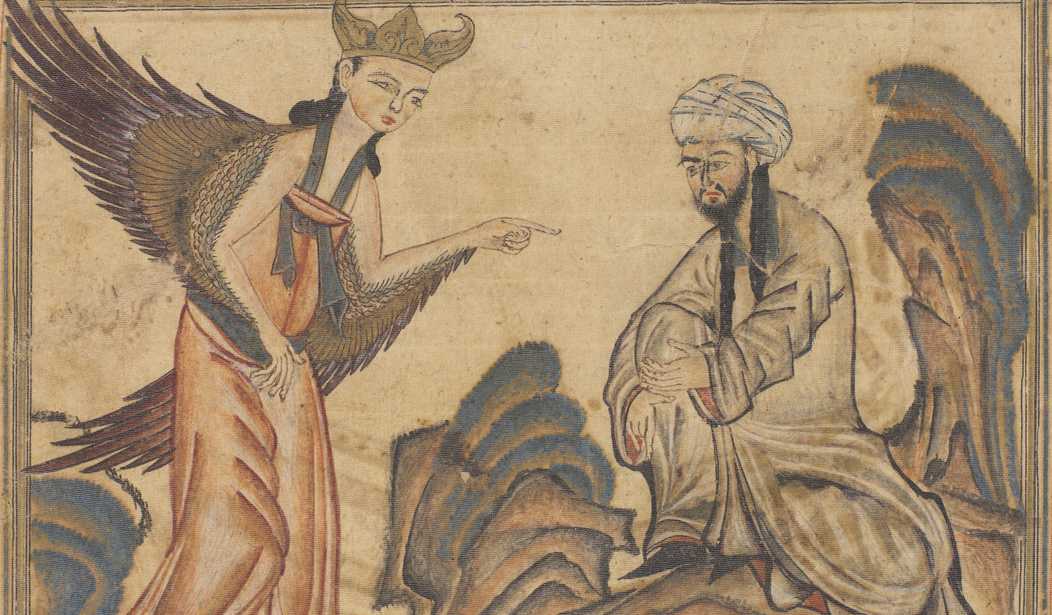Erika López Prater, an adjunct professor of art history at Hamline University in Minnesota, was going to teach a class in global art history last semester and wanted to make sure she wasn’t going to step on any toes.
In the syllabus she sent out before the course started, she warned that images of religious figures, including the Prophet Muhammad and the Buddha, would be shown in the course. She asked students to let her know if they would be offended. No one raised any objections.
On the day she planned to show the artwork depicting Muhammad, she prepped the class by explaining if anyone was going to be offended by the depiction of The Prophet, they would be excused. No one left. So Dr. Prater unveiled the picture — a reproduction in one of the earliest Islamic illustrated histories of the world, A Compendium of Chronicles, written during the 14th century.
Probably one of these from “A Compendium of Chronicles,” (Rashid-al-Din) pic.twitter.com/ZLy1VYUoEG
— 🇿🇦 ☭=failed C₁₈H₂₇NO₃ headed كافر 🇺🇦🇹🇼 (@hiredgnu) January 8, 2023
She promptly lost her job.
After Dr. López Prater showed the image, a senior in the class complained to the administration. Other Muslim students, not in the course, supported the student, saying the class was an attack on their religion. They demanded that officials take action.
Officials told Dr. López Prater that her services next semester were no longer needed. In emails to students and faculty, they said that the incident was clearly Islamophobic. Hamline’s president, Fayneese S. Miller, co-signed an email that said respect for the Muslim students “should have superseded academic freedom.” At a town hall, an invited Muslim speaker compared showing the images to teaching that Hitler was good.
Hamline is a small, private university in St. Paul, Minn., with about 1,800 undergraduates. And the administration panicked. Instead of scotching a campus controversy before it got started, they set off a national free speech row that continues to this day many months later.
Dr. Prater was only an adjunct professor with no tenure and little support in her department. But others — both on and off campus — have rallied to her defense, only enraging Muslims further.
Related:
PEN America called it “one of the most egregious violations of academic freedom in recent memory.” Hamline’s president, Fayneese S. Miller, defended firing the professor.
“To look upon an image of the Prophet Muhammad, for many Muslims, is against their faith,” Dr. Miller’s statement said, adding, “It was important that our Muslim students, as well as all other students, feel safe, supported and respected both in and out of our classrooms.”
The student who exposed Dr. Prater’s heresy of showing an artistic representation of Muhammad feels left out of student life.
“I’m like, ‘This can’t be real,’” said Ms. Wedatalla, a Sudanese. “As a Muslim and a Black person, I don’t feel like I belong, and I don’t think I’ll ever belong in a community where they don’t value me as a member, and they don’t show the same respect that I show them.”
Obviously, Ms. Wedatalla is wildly exaggerating, as is the Muslim town hall speaker who claimed that depicting The Prophet in art is like depicting Hitler as good. But where does this nonsense come from?
Islamic tradition or Hadiths, the stories of the words and actions of Muhammad and his Companions, prohibits images of Allah, Muhammad and all the major prophets of the Christian and Jewish traditions.
More widely, Islamic tradition has discouraged the figurative depiction of living creatures, especially human beings. Islamic art has therefore tended to be abstract or decorative.
Shia Islamic tradition is far less strict on this ban. Reproductions of images of the Prophet, mainly produced in the 7th Century in Persia, can be found.
The Koran is even vaguer, and some Islamic scholars believe that no such ban on depicting Muhammad or Allah in art can be found in it.
In recent years, Christians have died in Western countries because of mocking depictions of The Prophet or Allah. Perhaps this is what Ms. Wedatalla meant by “respect.”
In the West, we can revere Allah and The Prophet’s teachings, or we can mock them. This particular case of a reverent depiction of an important moment in Islam being seen as heretical only proves the necessity for Islam to reform or face total irrelevancy in half the world.










Join the conversation as a VIP Member